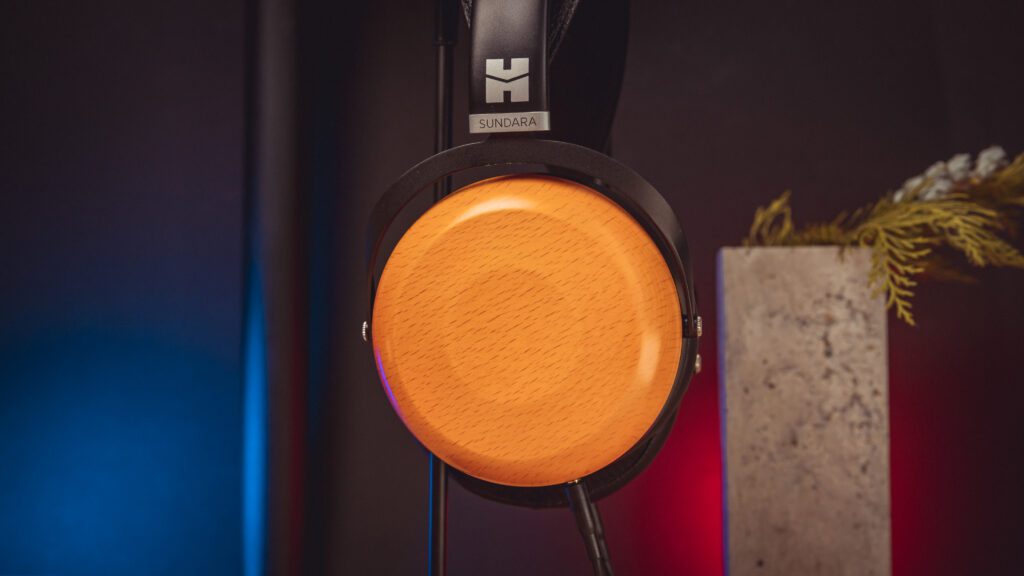Open-back headphones vs closed-back headphones vs IEM in 2024.
Open-back headphones vs closed-back headphones vs IEM? That’s a hard choice. Choosing the right headphone type affects not only your comfort, but also your audio experience. That’s why I decided to break down the main differences between open-back headphones, closed-back headphones, and in-ear monitors (IEMs) and explaining the advantages and drawbacks of every type. By grasping these pros and cons, you’ll have the insights you need to make an informed decision.
Open-back headphones
Open-back headphones offer an immersive sound experience. Their open design allows air and sound to flow freely, resulting in a spacious and natural soundstage. This design lends itself to a more open and airy listening experience, perfect for those who crave a wide and realistic sound representation. However, the openness comes with a trade-off – sound leakage. While you enjoy an expansive sonic experience, people around you can also hear what you’re listening to. Open-back headphones are best suited for quieter environments where you can fully appreciate their exceptional sound quality and captivating audio detail.

Pros:
- Spacious Sound stage: Open-back headphones create an airy and spacious soundstage. It’s like listening to music in a room, making the audio feel more natural and immersive.
- Natural Sound: The open design allows air to flow through the headphones, resulting in a more natural and transparent sound quality.
- Comfort: These headphones are known for being comfortable for long listening sessions due to the lack of pressure buildup on the ears.
- Less Ear Fatigue: The open design minimizes the “in-your-head” feeling that some closed-back headphones might cause, reducing ear fatigue over time.
Cons:
- Sound Leakage: Since the back of the headphones is open, the sound leaks out, which can disturb people around you and affect your privacy.
- Lack of Isolation: Open-back headphones don’t block external noises well, so they might not be suitable for noisy environments.
- Bass Response: The open design can sometimes result in less impactful bass compared to closed-back headphones.
Closed-back headphones
Closed-back headphones create a private sonic haven for your ears. With sealed ear cups, they effectively block out external noise, allowing you to immerse yourself in the audio without distractions. This design makes them a perfect choice for bustling environments, like commutes or busy offices, where you want to escape into your music or podcasts. This type of headphones excels in delivering focused sound directly to your ears, ensuring minimal sound leakage and maximum clarity. While they might not offer the same expansive soundstage as open-back headphones, their ability to cocoon you in your own audio world makes them a popular choice for those seeking an undisturbed and immersive listening experience.

Pros:
- Noise Isolation: Closed-back headphones offer better noise isolation, blocking out external sounds and allowing you to focus on your music.
- Enhanced Bass: The closed design often provides a more robust and impactful bass response, perfect for bass enthusiasts.
- Privacy: Sound leakage is minimized, allowing you to enjoy your music without disturbing others nearby.
Cons:
- Sound stage: The soundstage is generally more confined compared to open-back headphones, which might feel less immersive.
- Comfort: Some closed-back designs can cause ear fatigue during extended listening sessions due to pressure buildup on the ears.
- Natural Sound: The sound quality might feel slightly less natural compared to open-back headphones due to less airflow.
In-Ear Monitors (IEM)
In-ear monitors (IEM) offer a portable oasis of sound that fits right into your ears. These miniature marvels provide impressive sound quality in a compact package, making them a go-to choice for audiophiles on the move. With a snug fit in your ear canals, this type of headphones offer excellent noise isolation, allowing you to enjoy your music without the intrusion of external sounds. Whether you’re jogging, commuting, or just relaxing, in-ear monitors deliver a personal and immersive sound experience. While some may find the in-ear fit a bit intrusive, the trade-off is exceptional audio quality and convenience, making IEMs a popular choice for those who prioritize portability without compromising on sound fidelity.

Pros:
- Portability: IEMs are incredibly portable, making them perfect for on-the-go use.
- Noise Isolation: They provide excellent noise isolation by physically sealing the ear canal, blocking out external sounds.
- Sound Quality: Despite their small size, this type of headphones can deliver impressive sound quality, with clear highs, mids, and lows.
- Discreet: IEMs are subtle and sit inside your ears, making them less noticeable in public settings.
Cons:
- Fit: Achieving a comfortable and secure fit can be tricky for some people due to differences in ear shapes.
- Isolation Concerns: While great for blocking out noise, excessive isolation can be unsafe in certain situations, like when walking on busy streets.
- Maintenance: IEMs require regular cleaning to maintain sound quality and hygiene.
In the end, the choice between open-back, closed-back, and in-ear monitors depends on your preferences and intended usage. Consider where you’ll be using them the most, the kind of sound quality you desire, and your comfort level. Each type has its strengths and weaknesses, so take your time to find the perfect fit for your sonic journey.


